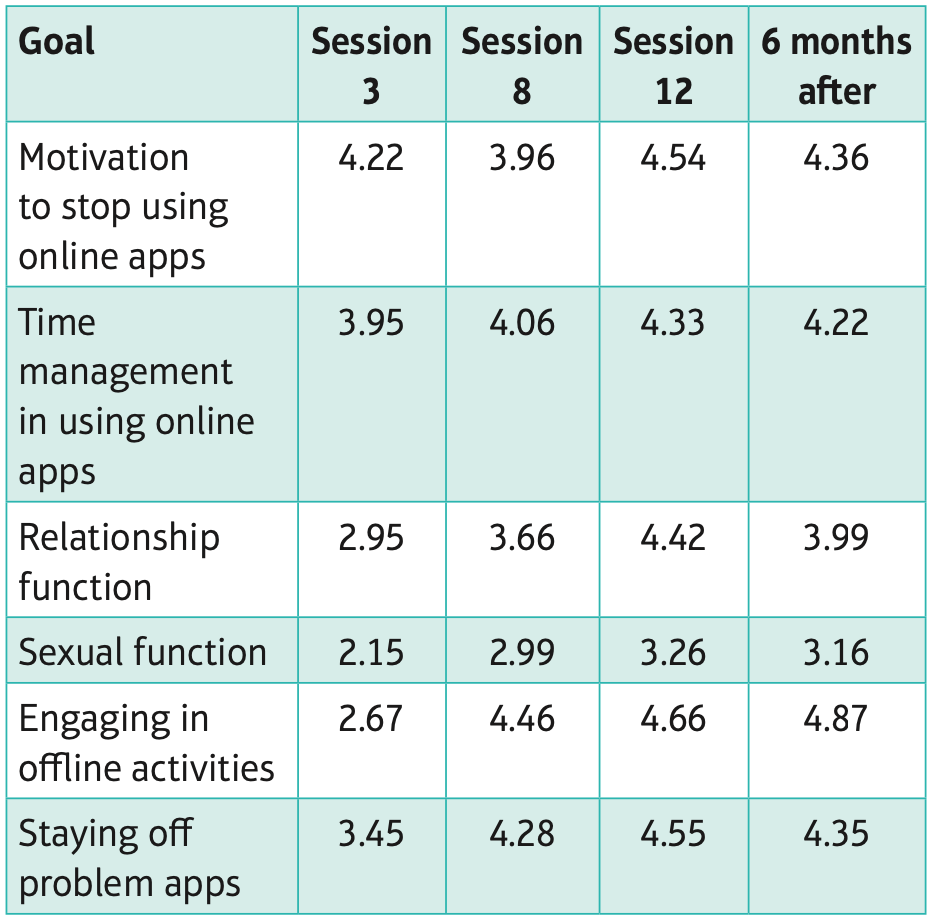Study - Young (2007): CBT with Internet Addicts
1/9
There's no tags or description
Looks like no tags are added yet.
Name | Mastery | Learn | Test | Matching | Spaced |
|---|
No study sessions yet.
10 Terms
What is the aim of this study?
To see how effective cognitive behavioural therapy (CBT) would be for those suffering from internet addiction
Who were the participants in this study?
114 clients recruited from the Centre for Online Addiction in Pennsylvania, USA
All the participants completed the Internet Addiction Test (IAT) and were shown to have an addiction to using the internet
Statistics:
% w/ bachelor’s degree - 61%
% ratio of M:F - 58% : 42%
Mean ages - M: 38 F: 46
What was the procedure of the study?
1) Participants received CBT sessions with an investigator
2) A client outcome questionnaire was given to participants at 3rd, 8th & 12th online sessions.
There were 12 questions which used a 5-point Likert scale, measuring:
Motivation to quit abusing the internet
Improved relationship functioning
Ability to control offline activities
Improved offline sexual functioning
How effective counselling was at helping clients achieve targeted treatment goals
Quality of counselling relationship
3) Then, there was a 6-month follow-up
Finding (1) - What were the different problematic online applications for men & women?
Percent | Men | Women |
30% | Pornography | Chatrooms |
N/A | Chatrooms | General chat, online auction houses, shopping (minority) |
N/A | Gaming (minority) |
Finding (2) - What were the problems associated with compulsive internet use?
1) Time
2) Relationship
3) Sexual
4) Work
5) Financial
6) Physical
7) Academic
Finding (3) - How did the rating of the quality of CBT sessions change?
Over 12 weeks, the average rating for the quality of CBT sessions improved
Finding (4) - What was the progression from session 3 to the 6-month follow-up?
Most clients showed continuous improvement by session 3
Effective symptom management by sessions 8 and 12
Overall improved symptom maintenance by 6-month follow-up

What are the conclusions of this study?
CBT and related techniques enabled clients to decrease thoughts and behaviours associated with compulsive internet use
Relapse prevention was achieved by clients over a 6-month follow-up
Proactive lifestyle changes to adapt to life without the internet were achieved
What are the strengths of this study?
1) INCREASES RELIABILITY
Standardised procedures - same questions & rating scale across all goal measurements
→ everyone assessed behaviours in the same way
PRACTICAL APPLICATIONS
2) Suggests that online sessions of CBT might be useful for treating internet addiction
→ may encourage more people to access treatment if other forms are not appropriate
What are the weaknesses of this study?
1) SUBJECTIVITY & LOWERS VALIDITY OF DATA
Clients filled in questionnaires about their own feelings and behaviour
→ might not be an accurate measure
2) LOWERS INTERNAL VALIDITY
Different types of internet addiction were identified but didn’t mention if all types achieved the same effects from treatment